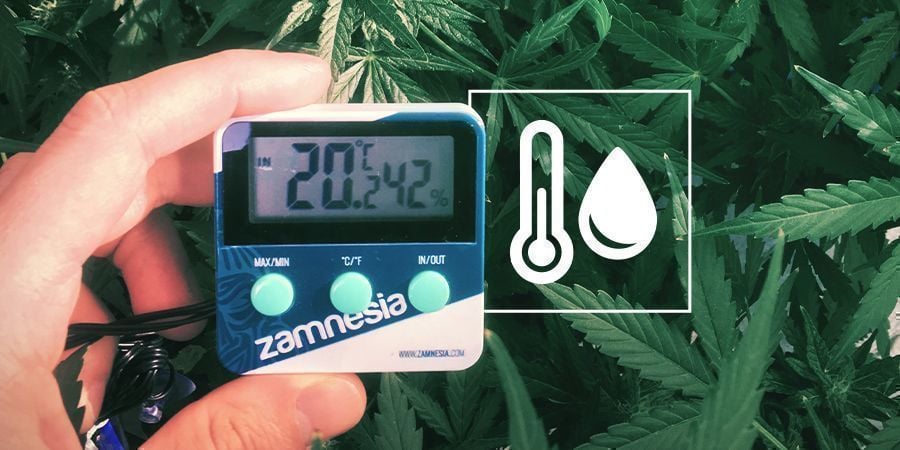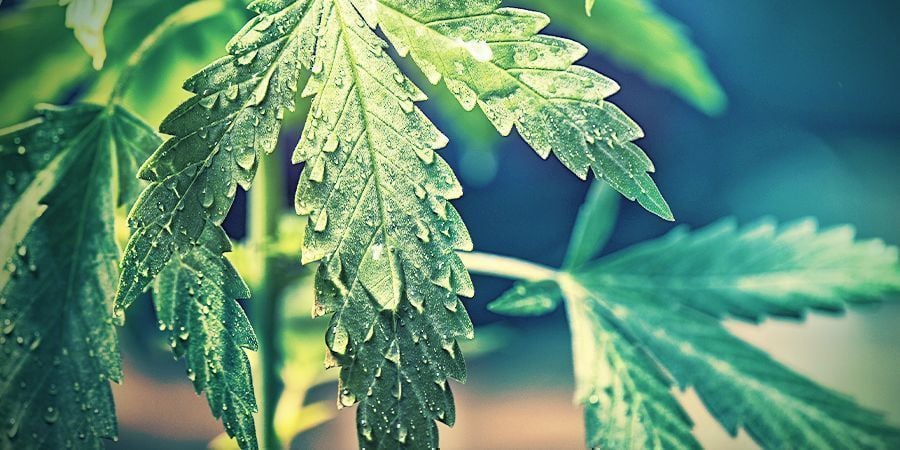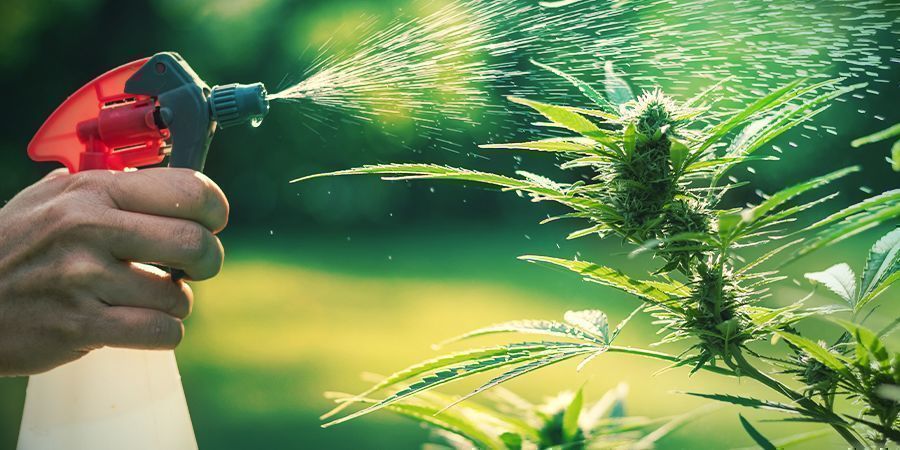Humidity In The Cannabis Grow Space

Among the factors that decide whether your cannabis grow will turn out successful is humidity. Optimal humidity varies depending on the stage of growth your cannabis plants are in. Learn why dialling in humidity is important, and how you can control it for healthy growth and bountiful harvests.
WHAT IS HUMIDITY AND WHY IS IT SO IMPORTANT?
Absolute humidity measures the water vapour in the air, but fails to factor in temperature. Expressing the value in grams per cubic metre, denoted as g/m³, this data is worthless to the ordinary decent grower. That being said, we needed to point this out early to avoid confusion later. For the duration of the text, when we refer to humidity, we will be referring to “RH” or relative humidity.
Relative humidity is a measure of the percentage of water vapour in the air at a specific temperature. RH is what counts in the grow-op. Temperature and RH are inextricably linked. Hot air can hold more moisture than cold air. Both temperature and RH must be monitored and controlled in order to succeed at indoor cannabis cultivation.
HOW TO MEASURE HUMIDITY: OPTIMAL HUMIDITY BY GROWTH STAGE

Don’t be a cheapskate. Prevent problems further down the line and buy a 2-in-1 digital thermo-hygrometer. These devices are inexpensive and will give you the accurate grow-op micro-climate data you need. Positioning the unit on a wall near canopy level will give you a more accurate reading than if you leave it on the floor.
-
CLONES AND SEEDLINGS
Sprouts love high humidity. As they are just developing roots, the high humidity makes it easier for them to absorb water vapour through their tiny leaves. Most growers aim for 60-80% RH for the first couple of weeks until seedlings and clones root.
-
VEGETATIVE GROWTH
Young cannabis plants will grow most vigorously if you can maintain 50-70% RH; ideally, for the duration of the vegetative growth phase. Mother plants will also perform best in high humidity environments. Low humidity, even without excessively high temperatures, can stunt plant growth. A dry microclimate is to be avoided at this stage.
-
FLOWERING
As soon as you make the switch to 12-12 with photoperiodic strains, or at about 4-5 weeks in with autoflowering varieties, humidity needs come down. All the way down to the 40-60% RH range. Later in bloom, the lower the better. Most growers try to keep RH as close to 40% as possible. High humidity during flowering, including during the dark cycle when lights are off, increases the threat of bud rot and mould. Also, the transition from a high humidity to dry microclimate should be gradual to avoid excessively stressing plants.
-
POST-HARVEST DRYING AND CURING
After you have manicured your buds, it’s critical to dry out the harvest slowly and evenly. Buds that dry too quickly will be crunchy. And the weed won’t cure properly. Cannabis flowers will dry perfectly around room temperature with approximately 50% RH. Anything above 60% puts your buds at risk of mould. After around 10-14 days, buds are ready for curing in a jar. Most growers like to keep RH within the 50-60% range for the next 30 days, airing out the curing buds at least once a day for 15 minutes.
HOW TO ADJUST HUMIDITY

To increase humidity early in the cannabis life cycle, the best tools are a propagator and a spray bottle filled with water. Misting clones and seedlings housed in a propagator will help increase humidity significantly. During a spell of warm weather, it may even be necessary to buy a misting humidifier.
Decreasing humidity becomes especially important during flowering. Removing standing water not only saves roots from rot, but will prevent inadvertently increasing humidity. Avoiding overwatering also helps. Moreover, an oscillating fan will increase air circulation.
However, sometimes you need to go further to maintain optimal humidity. Dehumidifiers come in all shapes and sizes. Simple units filled with moisture-absorbing crystals can be effective and you can pick them up at a €1 shop or similar. Worst case scenario, in very damp conditions you will need to invest in an electronic plug-in dehumidifier from the grow store.
TIPS TO PREP THE GROW-OP
Access to fresh air and/or air conditioning can make it so much easier to maintain optimal environmental conditions in the grow room. Good air exchange - cool air in, warm air out - makes all the difference.
Micro-growers and cabinet growers might not need to invest as heavily in powerful fans or air conditioning, but still can’t afford not to prep the grow-op for optimal humidity. Simple, practical solutions like opening a window for a few hours, using a few clip-on fans, or turning on/off the heating in the room where plants are growing in the cabinet can make a huge impact.













 United States
United States










